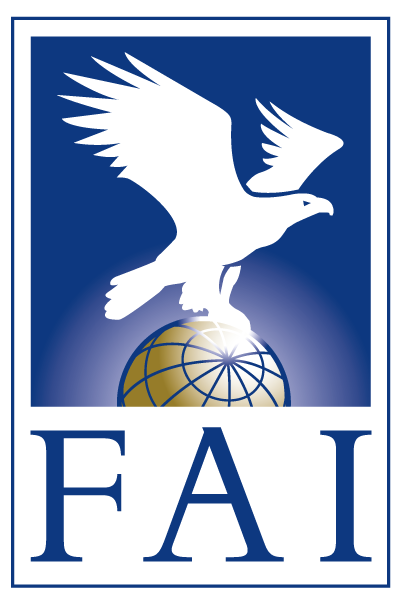Book article about the 22nd Coupe Aéronautique Gordon Bennett
Start: Warzaw, September 23rd, 4 p.m.
From the Book: Die Gordon Bennett Ballon Rennen
(The Gordon Bennett Races) by Ulrich Hohmann Sr
Poland had engraved its name as first on the fourth cup, not surprising for insiders, because they had performed very well in the year before in Basel with a 4th and 6thrank. This young republic, founded on November 11th, 1918, after a long struggle for independence, had understood the charisma of a Gordon Bennett victory. First very closely connected to France and with enemy feelings towards the German Reich, President Moscicki, elected in 1926, tried to improve relationships to Germany without loosing the connections to France. Poland tried to open wide in all directions. On January 26th, 1934 this let to a non-aggression pact with the German Reich. If one wants to win friends from all sides, one also had to offer hospitality at big sporting events. The Polish did this fantastically.
For ballooning, better for ballooning in service for science, the year started with horrible reports. On January 30th in Moscow a stratosphere balloon started with a crew of three men, reached an altitude of 20.600 meters where they reported by radio to the ground crew a temperature reading of minus 77 degrees Celsius. The radio contact was interrupted. The next day a search fleet of planes discovers the capsule with the three dead men southeast of Moscow. The two German high altitude researchers Martin Schreck and Viktor Masuch meet the same faith. On May 13th they climb into the basket of the high altitude balloon BARTSCH VON SIGSFELD to be later discovered dead in Russia. Success in altitude research, to which very much attention is paid in those days, is reported from the USA. There, female pilot Jeanette Piccard, becomes the first woman to reach space together with her husband, twin brother of Auguste, Jean Piccard as observer. Their altitude on October 23rd was 18.672 meters.
From prominent political persons this year mostly sad news has to be reported. On February 17th, Belgium King Albert I has an deadly accident on a mountain tour, aged 59. Shortly before his death, he had asked his people for a subscription, to provide a new racing balloon for Demuyter. This subscription was very successful, Demuyter became well equipped, but the tragic death of his sponsor did not make him very happy about this. In Germany, on June 30th, the so called “Röhm Coup”, started, with in fact was none, and just served Hitler to get rid of his inner party opponents. Aged president von Hindenburg does not realise anymore how far these events reach, he dies on August 2nd, 1934, aged 86. Also in Austria political parties struggle. This fight ends in the murder of Chancellor Dollfuß on July 25th, 1934 in his office at the Ballhausplatz in Vienna. Some good news reaches the media four days before the start of the Gordon Bennett Race: On September 19th the Soviet Union declares its membership to the League of Nations in Geneva.
Sports ballooning was less regarded by the public. Everybody looked towards car racing, the competition between Mercedes and Auto Union. It is the time of the famous Mercedes Silver Arrows with drivers like Caracciola and Faglioli, winning the Grand Prix of Italy in Monza on September 9th, while the famous driver of Auto-Union, Hans Stuck sets five new world records for speed on September 20th. Three days later the balloons start in Warzaw. But before we look at this, I want to show a relationship that shows how far or near these days lay back from today: Brigit Bardot is born on September 28th, 1934, five days after the launch.
The National Aero Club of Poland had sent out the invitations. Demuyter states, that these invitations, compared to several invitations the years before, were remarkable friendly. One felt the efforts of this nation, to become acknowledged in this circle. Demuyter also writes in his memories, that he realized, that all addressed people did respond to these efforts with great care and affection. There was more or less a wide span of promises to help and sympathy, a fraternisation among balloonists. One episode before the race was typical: Two pilots from Spain had sent their entry 21 days after the deadline. According to the rules, they could not take part. But Demuyter suggested conducting an opinion poll among all participating crews, if they had any objections to the late entry. The Polish Aero Club as well as all participating competitors agreed, first the international jury denied and referred to the rules. Those who consider this not to be too important, may remember, that in Spain the Republic was proclaimed in December 1931 and since then a lot of hard internal struggle and separatist movements had happened, which later (at the beginning of October 1934) lead to an uprising with almost the amounted to a civil war in Austria. This uprising was beaten down by strong military forces. Every other nation however, according to its kind of government, had expressed its own position to this situation. If under these circumstances a united opinion shapes, this is quite remarkable.
Organization was perfect. Meteorological information were printed almost every hour and handed out to the competitors. Winds were quite different, according to the altitude the balloons were driven far apart. Comparing the tracks, they differ more than 70 degrees. Demuyter is enthusiastic about the climatic situation, for he can improve his track according to the altitude. Other balloons suffer from snow, rain and poor sight because of clouds. The teams in front made a far trip to the Soviet Union, the country, that attracted a lot of interest in those days. Let the competitors report:
The victorious Polish competitors, winning the Gordon Bennett Cup for the second time, captain Franciszek Hynek and lieutenant Wladyslaw Pomaski report.

